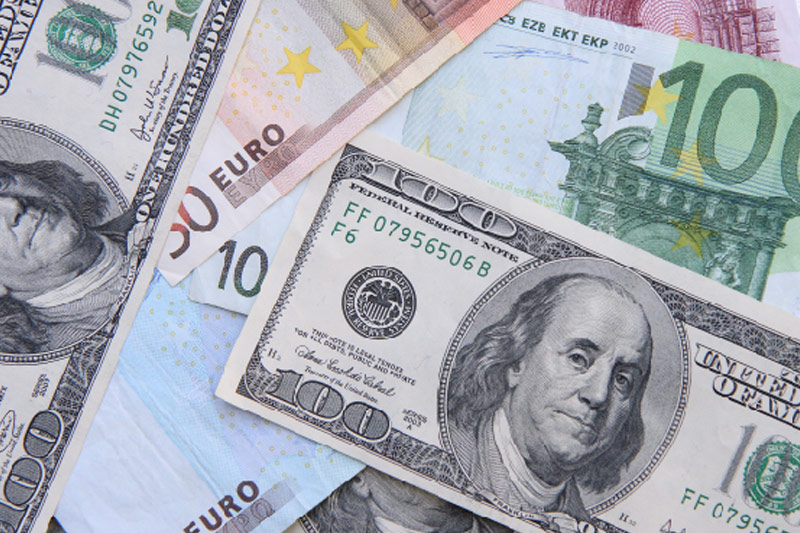Investing.com - The dollar firmed against most major currencies on Wednesday, still buoyed by Tuesday's batch of positive economic indicators, while expectations for the European Central Bank to loosen policy softened the euro and bolstered the greenback's safe-haven appeal.
In U.S. trading on Wednesday, EUR/USD was down 0.30% at 1.3595.
The euro has fallen nearly 2% against the dollar since the ECB indicated at its May 8 meeting that monetary authorities would feel "comfortable" with easing monetary policy at its June 5 meeting to help shore up the region's fragile recovery.
On Tuesday, ECB President Mario Draghi said the bank was aware of the risks of persistently low inflation and was prepared to take steps to get euro zone inflation back to its target, the latest indication that the bank could loosen monetary policy next week.
The annual rate of euro zone inflation was 0.7% in April, well below the ECB's target of close to but just below 2%.
Meanwhile, data on Wednesday showed that the number of unemployed individuals in Germany rose by the largest amount in five years in May. The seasonally adjusted jobless total rose by 24,000 this month to 2.905 million, defying expectations for a fall of 15,000.
The German unemployment rate remained unchanged at 6.7%, well below the euro zone average of 11.8%.
The dollar, meanwhile, saw residual support stemming from Tuesday's upbeat U.S. consumer confidence, housing and pricing data, which served as a reminder that the economy continues to recover and is in less need of monetary stimulus measures.
The Conference Board reported that its consumer confidence index rose to 83.0 this month from 81.7 in April, in line with market expectations.
Elsewhere, the Standard & Poor’s/ Case-Shiller house price index rose 12.4% in March from a year earlier, beating forecasts for a gain of 11.8% and following a rise of 12.9% in February.
Healthy wholesale pricing data firmed the greenback as well.
The Commerce Department reported earlier U.S. durable goods orders rose 0.8% in April, confounding expectations for a 0.5% fall, after a 3.6% increase in March, whose figure was revised up from a previously estimated 2.9% rise.
Core durable goods orders, which are stripped of volatile transportation items, rose 0.1% last month, missing expectations for a 0.3% increase. Core durable goods orders in March were revised up to a 2.9% gain from a previously estimated 2.4% rise.
The dollar was down against the yen, with USD/JPY down 0.14% at 101.85 and up against the Swiss franc, with USD/CHF up 0.15% at 0.8982.
The greenback was up against the pound, with GBP/USD down 0.58% at 1.6712.
The pound came under pressure after the Confederation of British Industry said its index of U.K. retailers dropped to 16.0 this month from 30.0 in April, defying expectations for a rise to 35.
The data came one day after a report by the British Bankers' Association showed that banks approved the lowest number of mortgages since August last month.
The data indicated that the U.K. housing market could be losing some momentum, although house prices remained strong.
The dollar was up against its cousins in Canada, Australia and New Zealand, with USD/CAD up 0.16% at 1.0877, AUD/USD down 0.29% at 0.9232 and NZD/USD down 0.82% at 0.8494.
The US Dollar Index, which tracks the performance of the greenback versus a basket of six other major currencies, was up 0.23% at 80.61.
On Thursday, the U.S. is to release revised data on first-quarter GDP as well as the weekly government report on initial jobless claims and data on pending home sales.
